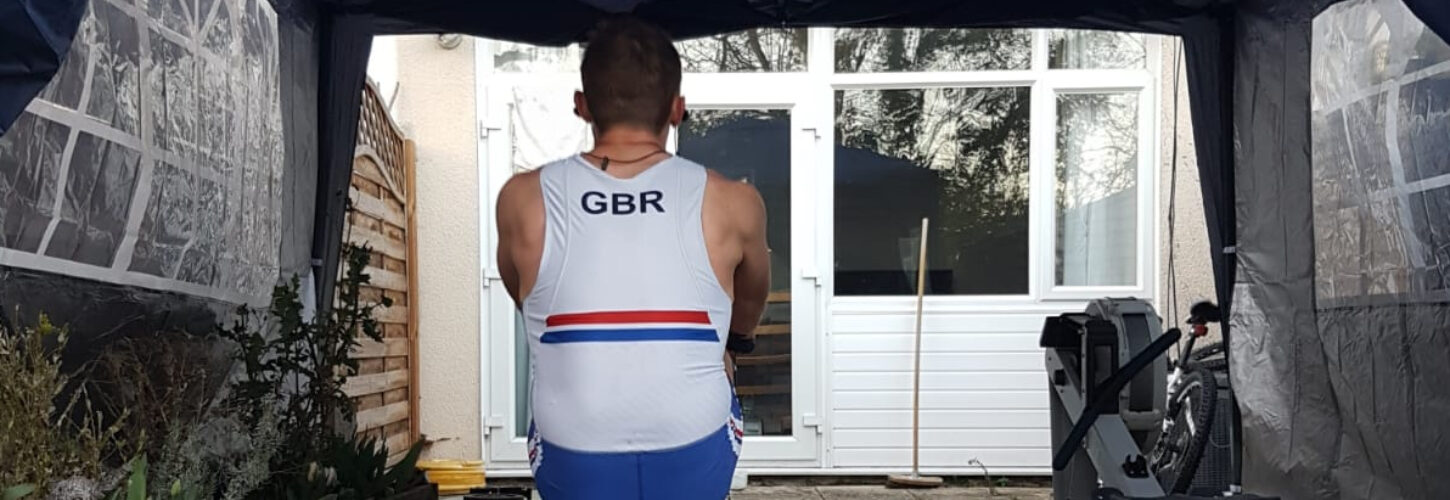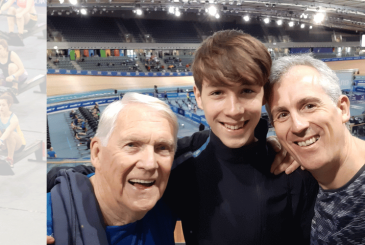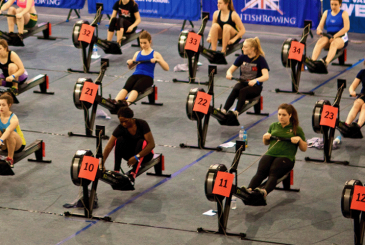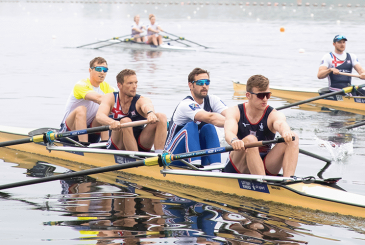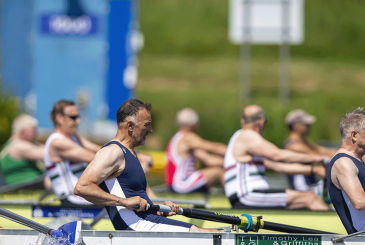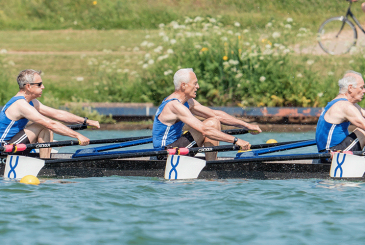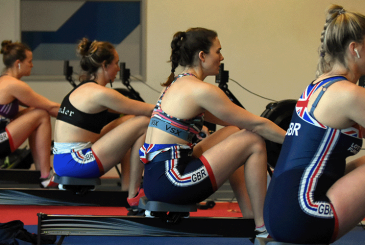The GB Rowing Sport Science Team ask GB rowers for their lockdown observations and share the supporting research
The Covid-19 lockdown period has provided the Great Britain Olympic and Paralympic rowing team with many challenges but also with many opportunities. Having closely monitored the training completed during this time, the team have certainly risen to the challenge, despite the varied training locations and set-up!
With optional/individual training within the programme, many members of the team have used sports science to reflect on, and enhance, their training regimes. Here are five areas that they have found particularly useful.
1 – Heart rate
Training with a heart-rate monitor has enabled the rowers to make better decisions while training remotely.
John Collins, A finalist at the 2019 Worlds in the double sculls, has changed his approach to training since going into lockdown.
He said: “When doing steady state, or UT2, I make sure that my heart rate doesn’t go too high, or drift too much. It helps me to know when it’s okay to nudge things on and when I need to back off.”
UT2 training uses base level sessions at between 65 and 75% of maximum heart rate to build aerobic capacity. This prevents rowers from working too hard for low-intensity sessions, but not hard enough when at higher intensity.
“By being sensible on the steady state, I have the energy to really attack any of the intensity work, so that has moved on loads”
A typical heart-rate range for a steady-state session would be between 140 to 150 bpm, with clear individual variations.
Monitoring heart rate alongside perceived effort, allows the rowers to train within the correct training zones to optimise adaptation and is easily measured with a chest strap or a smart watch.
Many effective endurance training programmes are comprised of approximately 80-85% of low intensity, or ‘easy training’. To ensure that the easy training sessions are in fact easy, John has paid close attention to his heart rate during each session.

“I’ve been able to support the principle of doing the easy stuff easy, and the hard stuff hard.”
John added, “By being sensible on the steady state, I have the energy to really attack any of the intensity work, so that has moved on loads.”
What John is describing is polarised training, which is described in more detail by Professor Stephen Seiler’s TED Talk.
Seiler is a leading researcher in understanding how elite endurance athletes train and is a strong advocate of polarised training.
2 – Cross training
Cross training has become essential for all rowers during lockdown to avoid rowing-related overuse injuries from the rowing machine.
Imogen Grant, bronze medallist in the lightweight women’s double at the 2019 Worlds, has turned this into a positive experience.
She said: “Grinding out kilometer after kilometer on the ergo can be hard mentally and physically, with the added challenge of erging in my living room.

“The addition of cycling and running to my programme means that I can escape the house, and make sure my body is getting enough rest from the ergo without reducing my training load.”
The GB Rowing Sport Science Team have utilised the T2minute method, a novel measure for quantifying training loads developed by Dr Jacqueline Tran.
The method applies ‘weighting factors’ to different training modalities and training intensities, which enables coaches and athletes to compare the physiological load of each cross-training modality.
Imogen said: “The majority of the cross training I do is UT2, as I want to prioritise the intensity to something more rowing specific. I used the training load data to build up mileage, especially in running, to make sure that I wouldn’t injure myself.”
3 – Sleep
English Institute of Sport physiologist, Luke Gupta, revealed that sleep disturbances are high among elite athletes, which can affect training and competition directly, through fatigue.
The rowers prioritise their sleep environment as much as their training environment
Holly Hill said: “Sleep is crucial to having a productive day on the ergo and in the gym. When I feel tired, I can’t concentrate as much on my technique and lack the energy to lift maximally in the gym because I haven’t recovered well.”
Interestingly, during lockdown some rowers’ overall sleeping habits have changed, where they are sleeping for longer and napping less, due to a change in the daily training routine.
To maintain a consistently high quality of training and recovery, the rowers prioritise their sleep environment as much as their training environment.
Hill continued: “Since it’s also been pretty bright outside during the summer, I’ve used an eye mask and ear plugs every night too. I find them pivotal to a good night’s sleep because I wake up less often during the night and can also sleep for a full eight to nine hours during the longer hours of daylight.”
Sleeping in her parent’s outhouse, Hill also upgraded her sleep environment with a mattress, from British Rowing’s Sleep Partner, eve sleep.
4 – Music
Meanwhile, Moe Sbihi, 2016 Olympic champion in the men’s four, turns to his favourite music genre to complete over 100km on the ergo each week.
“For me, music really helps distract you from what is going on – the pain, the monotony or even the mileage clock,” he said.
“I have certain songs that I use that mean so much to me that when I hear them, I get a buzz”
In the first lockdown, the rowers were training in their kitchens, living rooms, gardens and garages – during this time, Moe clocked up over 100 hip hop albums to fuel his training.
“I’m not saying that every album has been great. There have been some duds, but the enjoyment I have had during the tough lockdown period has been worth the research.”
The BASES Expert Statement on the use of music in exercise states that music can promote an ergogenic (work-enhancing) effect. Typically, music has been shown to improve exercise performance by either reducing perceptions of fatigue or increasing work capacity.
Moe goes on to say: “It helps you focus on the session and commit to it. But more importantly, it helps you push on. I have certain songs that I use that mean so much to me that when I hear them, I get a buzz.”
5 – Competitive edge
Athletes across the UK were unable to train with their teammates during the first lockdown, which for many crews was a big challenge.
2016 Paralympic champion Lauren Rowles did not want that to affect her crew, so from the beginning of lockdown she organised Zoom squad sessions.
“Having multiple Paralympic and world champions in a training session means that the competitive fire is always burning”
She said: “Lockdown and solo training in your living room has its challenges, especially when you’re part of a tightly knit team. The new Zoom community of over 20 athletes and coaches from six different Paralympic sports have ensured we continue to thrive in a team environment and push ourselves in training.”
There have been several benefits to the Zoom sessions.
Lauren added: “Having multiple Paralympic and world champions in a training session means that the competitive fire is always burning.”
Interestingly, the differences between exercising alone, or as part of a group, has been studied in rowers.
Emma Cohen and colleagues recruited the Oxford University Boat Club squad to train alone and part of a group. The study concludes that, training as part of a group significantly increased pain threshold due to synchronicity of the activity increasing endorphin release – chemicals produced by the central nervous system that lead to feelings of euphoria.
For Lauren, the virtual group sessions have done just that: “We pull each other through the toughest days whilst also making sure we are challenging each other’s ability.”
So, although Covid-19 has paused the racing calendar, the Great Britain Olympic and Paralympic rowing team have used this experience to train smart (and hard!), stay motivated, stay connected and not lose sight of their new crew goals for the exciting 2021 season.


